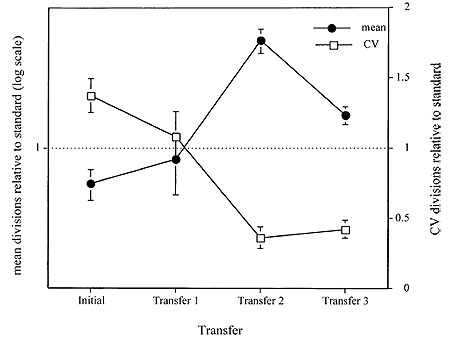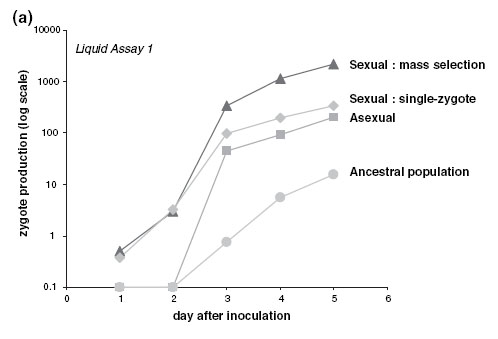The evolution of sex is one of the most fascinating problems in biology. I have written two books on the topic. The prevailing theory to explain the maintenance of sex is that it accelerates adaptation by increasing genetic variation. Our experiments with the green alga Chlamydomonas support this view. We also have a long-term experiment to investigate how gender evolves in response to the environment in which mating takes place.
Related publications
- Bell, G. 1982. The Masterpiece of Nature:the Evolution and Genetics of Sexuality. Croom Helm, London; University of California Press, Berkeley
- Bell, G. 1989. Sex and Death in Protozoa: the History of an Obsession. Cambridge University Press
- Renaut, S., Replansky, T., Heppleston, A. & Bell, G. 2006. The ecology and genetics of fitness in Chlamydomonas. XIII. The fitness of long-term sexual and asexual populations in benign environments. Evolution 60: 2272-2279.
- Kaltz, O. & Bell, G. 2002. The ecology and genetics of fitness in Chlamydomonas. XII. Repeated sexual episodes increase rates of adaptation to novel environments. Evolution 56: 1743-1753.
- Colegrave N., Kaltz O. & Bell G. 2002. The ecology and genetics of fitness in Chlamydomonas. VIII. The dynamics of adaptation to novel environments after a single episode of sex. Evolution 56: 14-21.
- Zeyl, C. & G. Bell. 1997. The advantage of sex in evolving yeast populations. Nature 388: 465-468.
- Bell G. 2005. Experimental sexual selection in Chlamydomonas. Journal of Evolutionary Biology 18: 722-734.
|
A single sexual episode depresses mean fitness but increases variation, so fitness recovers through selection |
Sexual selection increases zygote production by at least an order of magnitude. |

